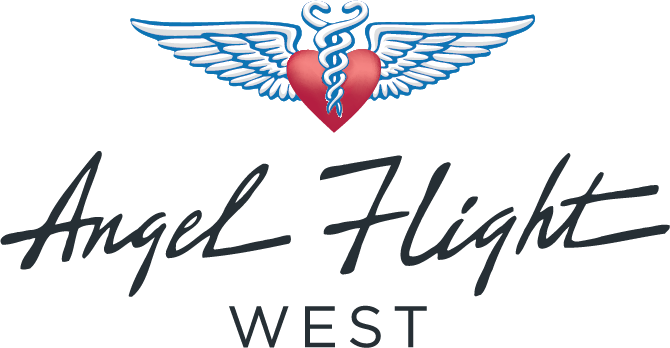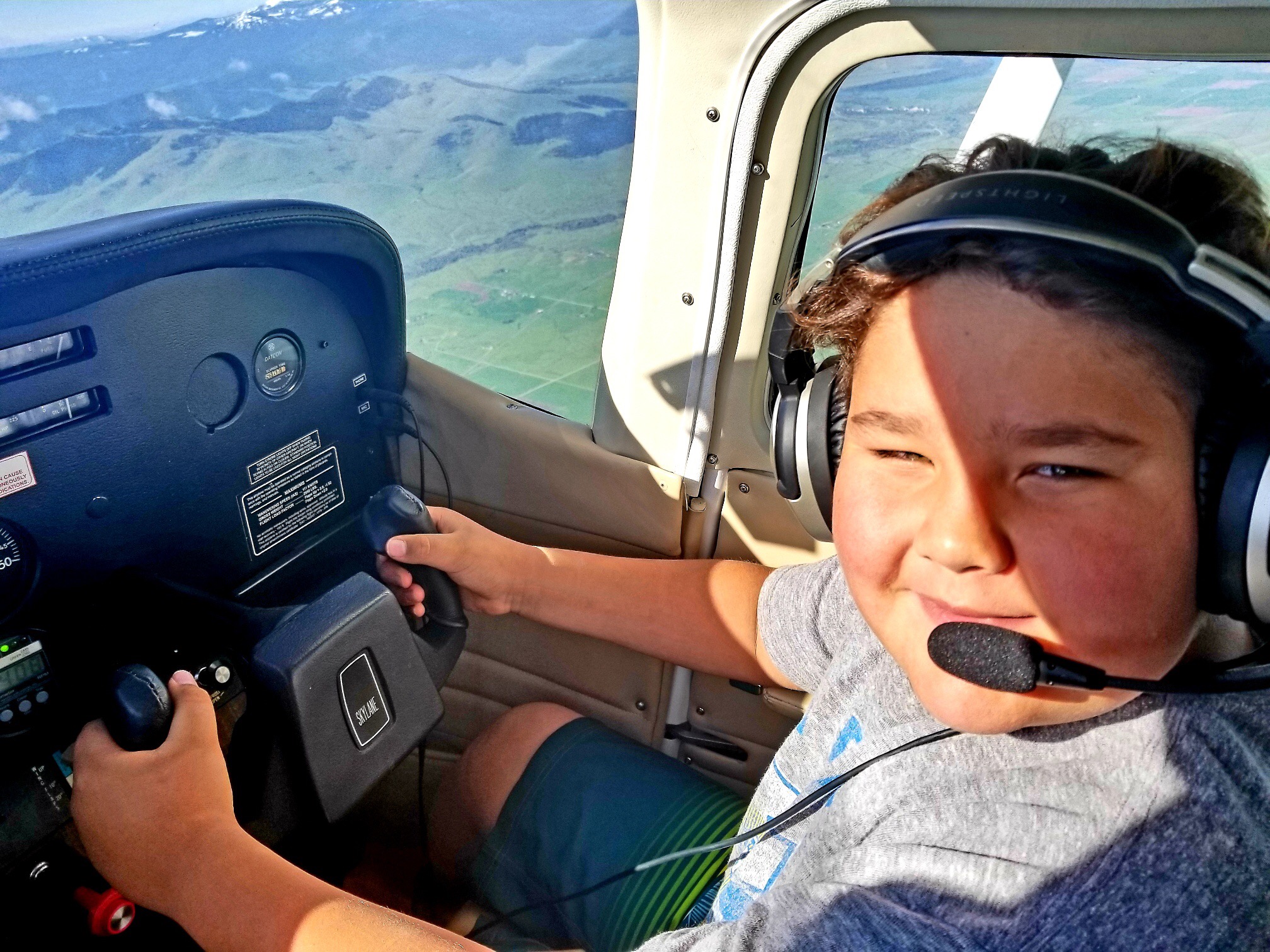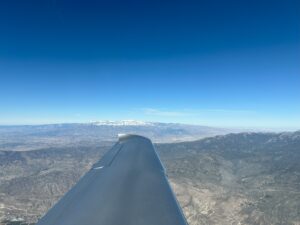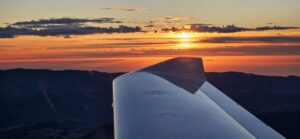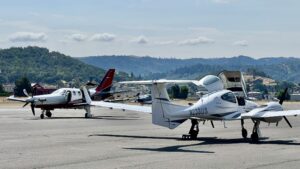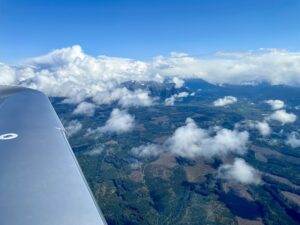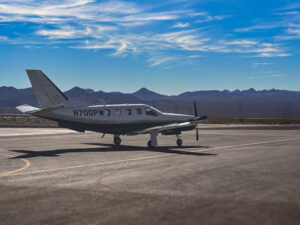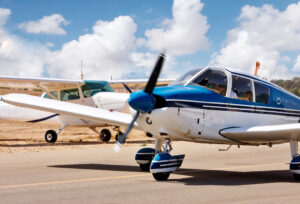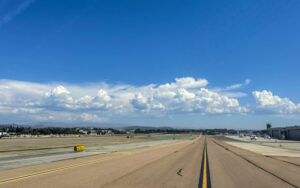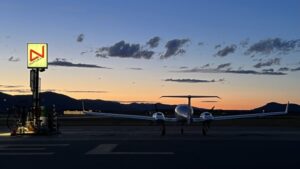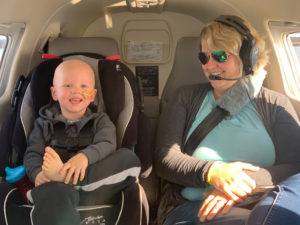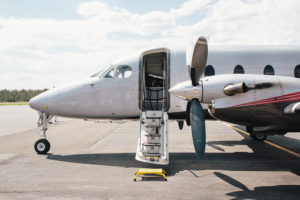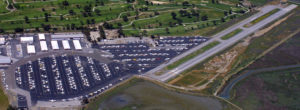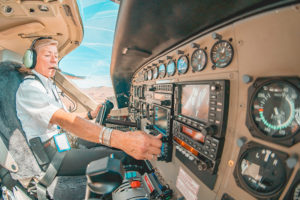Are you a mountain pilot? You probably are even if you aren’t aware of it. In most of Angel Flight West’s territory we encounter many, or even all, of the characteristics of mountain flying even though we may not be flying in the classical “back country.” AFW Pilots routinely fly over some of the most inhospitable terrain in the United States. On practically every flight, particularly during the summer, you can experience high density altitudes, turbulence, unusual winds — on the surface and at altitude, updrafts and downdrafts. Fortunately, in most instances, they are not severe enough to cause problems.
However, should any or all of them increase in intensity at a moment when the aircraft doesn’t have sufficient energy, the situation could change quickly. Be constantly prepared to recognize and cope instantly. Even better, always plan and fly with sufficient safety margins so that these issues become inconveniences, rather than emergencies.
In attempting high density altitude takeoffs, either calculate density altitude or use the ASOS/AWOS announcements of the density altitude. If there isn’t local weather, use your aircraft’s OAT gauge and E6B, aviation calculator, or density altitude chart to determine the current Density Altitude.
Especially when operating at near gross weight or at unusually high density altitudes compute your takeoff roll, and rate of climb, versus what is required for departure and obstacle clearance, and remember, that your POH performance data is based on a new aircraft, flown by a razor sharp test pilot, and then, probably, massaged by the marketing folks. As a rule of thumb, if 71 percent of the takeoff speed is obtained halfway down the runway, you will be able to take off in the runway remaining. If not, you should immediately abort. If at any point during the take-off the acceleration doesn’t feel right, immediately abort.
For a sense of what effect density altitude can have on aircraft performance, a rule of thumb for calculating a take-off distance is to add 10% of the sea level pressure altitude take-off distance for each 1000 feet of density altitude up to 8,000 feet density altitude and above that add 15%.
If the situation warrants, consider accelerating while in ground effect because you can better see where you are going and the aircraft accelerates better. Be sure to practice first at high density altitudes and without obstructions until you know what your aircraft will do.
Remember, a naturally aspirated engine starts losing power at any density altitude above sea level and may not be able to even make 75% power at 7000 feet pressure altitude. Refer to your aircraft’s POH regarding any leaning or engine operating procedures and expected performance for high density altitude take-offs and other operations. If your POH doesn’t cover leaning for take-off, the following method is recommended by Sparky Imeson, well known mountain flying instructor. At full power (preferably during take-off roll if the runway is long enough), lean the mixture until the engine runs slightly rough and then enrichen until the engine runs smooth again.
If you’re taking-off or landing at an airport with a density altitude significantly higher than you’re used to, be aware of the visual impression that the aircraft seems to be going faster than the airspeed indicator shows. That is a dangerous truth because it is a natural inclination to fly at a speed that visually matches what you are used to. Use the airspeed indicator as to your primary reference and always fly the landing approach at the indicated airspeed for a normal sea-level approach accounting for winds and gusts.
If the forecast is for turbulence, anything greater than light can be a problem, especially in the mountains. Also, remember that what is comfortable for you may be very uncomfortable for your passengers. Severe turbulence is an absolute no, no. Avoid it as if your life depends upon it — it might!
Get winds aloft forecasts before your flight and verify them during the flight. Some areas even have AWOS/ASOS transmitters located in the mountains to provide weather reports selected mountain passes. You can find the frequencies on Sectional and WAC charts. If the winds are significantly higher than forecast, be wary of the entire forecast and if they exceed 20 knots consider different routing or even canceling the flight. Also, consider alternatives if the winds at your destination are greater than 20 knots.
Be aware of and avoid mountain waves on the downwind side of mountains, along with the associated downdrafts and updrafts and turbulence that, with strong winds, can be devastating as much as 50-100 miles downwind from a mountain range. Flying over mountainous areas, always maintain 2000 feet or greater terrain clearance. Cross ridge lines at a forty-five-degree angle, so that you can easily turn toward lower terrain. Don’t fly beyond the point of no return so that if power is lost or reduced you can still turn around. Know the airspeed and configuration for minimum radius turns and practice them until you are competent.
With GPS pilots are inclined to take a shorter, direct, routing. In the mountains consider following airways or even roads, because they usually traverse more hospitable and lower terrain as well as routing near airports. Check your potential routings on a sectional and, if available, an IFR enroute chart where you can use the Minimum Enroute Altitudes to help determine the best routing. Roads are a potential emergency landing strip – but watch out for traffic, trees, and utility poles and wires, and NEVER fly under the orange, red, or yellow balls that mark power lines – there are frequently wires below them. Don’t thermal shock or detune the engine with power off descents or rapid throttle movements due to the possibility of the engine not responding correctly when you really need it.
Prepare and carry an emergency survival kit. It should include enough water for at least 2-3 days for each passenger. Have it within reach at all times. If it is in the baggage compartment it may not be accessible in an emergency. Ensure everyone dresses for the environment you are flying over. Proper footgear is a must. Most mountain flying courses recommend you stay with the aircraft because it’s easier to see the plane than someone walking in the woods. Consider carrying a 406 PLB (personal locator beacon) with GPS locator and 100M accuracy if your aircraft is not so equipped. This could reduce your mountain adventure from days to hours. More on PLB devices in a later article.
Don’t become complacent, fly by rote, or ignore the warning signs of weather, terrain or wind. Because of the convective activity, icing in mountainous terrain is usually more dangerous than in the flatlands and in the afternoon cumulus clouds often build higher than most general aviation aircraft can fly.
The foregoing is, primarily, taken from Sparky Imeson’s “Mountain Flying Bible”, and his “Ten Commandments”, along with some of my own experience. Sparky lived, breathed and taught mountain flying for many years. I attended his seminars, and knew him well. Unfortunately, he was killed in a crash in the Montana mountains last year, after surviving a previous accident and survival situation in which he was not the pilot in command. Mother Nature can reach up and bite the best of us, So be prepared; do the proper risk assessments for every flight, and always leave plenty of margin for error. You never know when you will need it.
